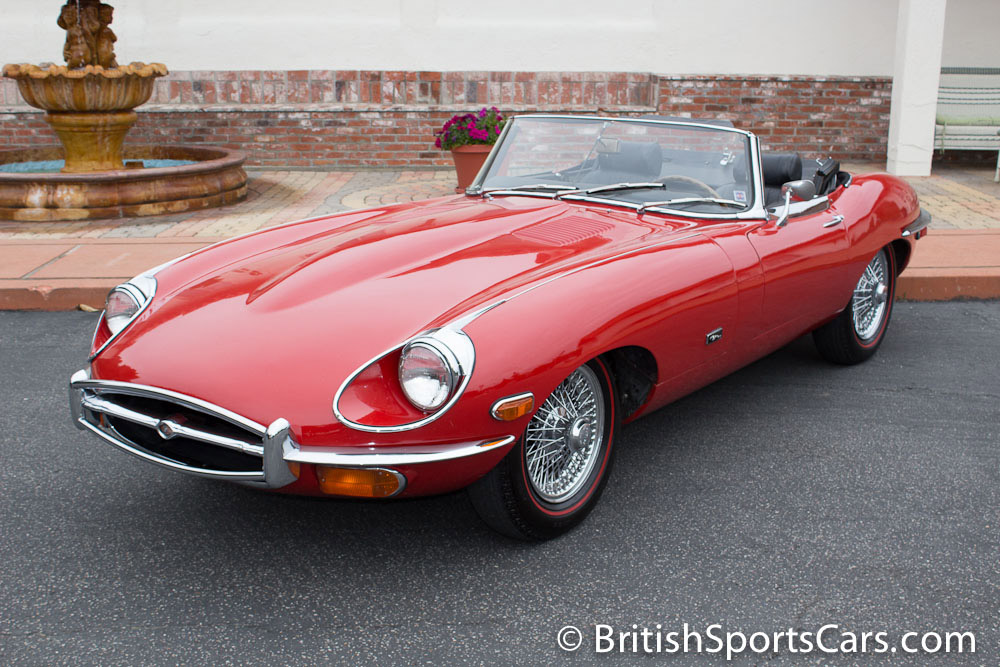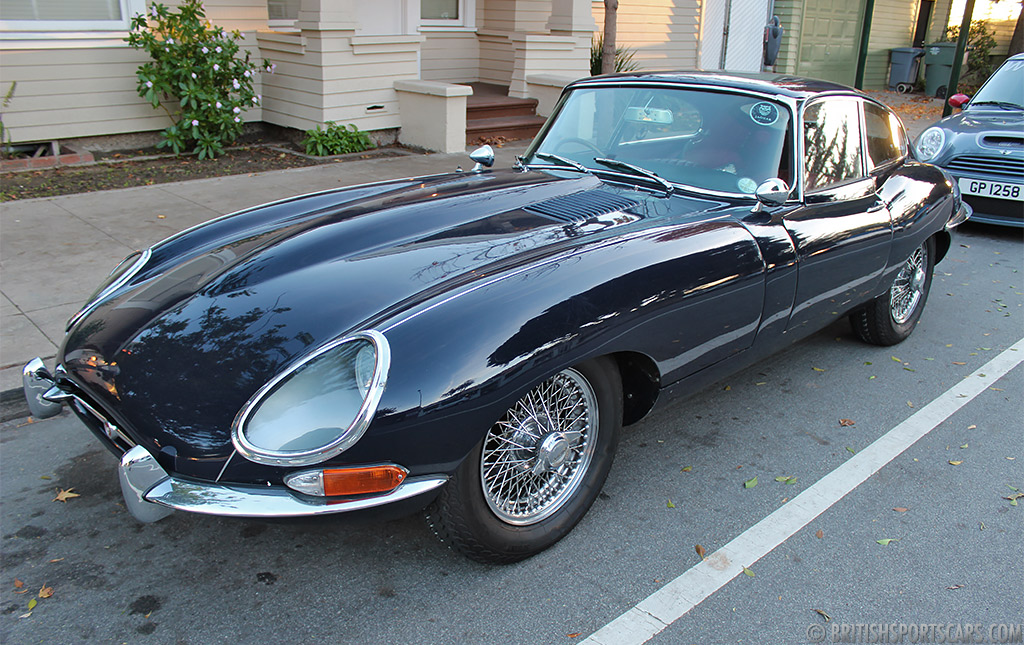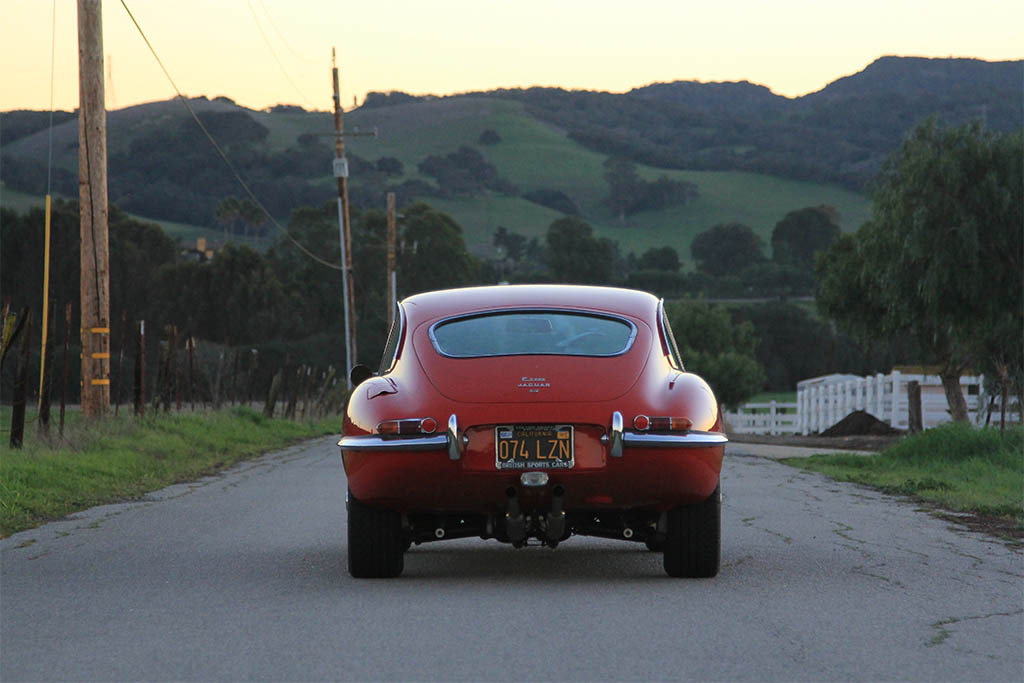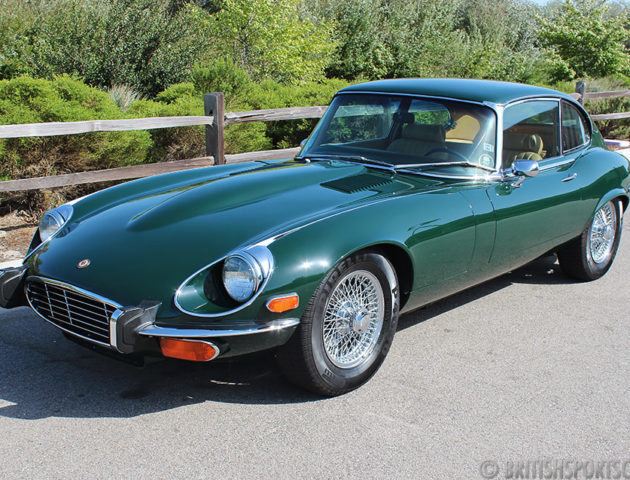Samuel Austin | November 12, 2017
What can be said about the simply incomparable Jaguar E-Type that has not been said already? From the moment of its unveiling in March 1961, it was being spoken of as a modern classic, with no less a motoring figure than Enzo Ferrari describing it as “the most beautiful car ever made”.
You, a friend or relative may own or have owned an E-Type, which was produced in three series between 1961 and 1975. You have almost certainly marveled at its Malcolm Sayer-penned sweeping curves, or felt the grunt of the 3.8-litre straight-six engine taken from the XK.
Indeed, the original E-Type that stunned the world in 1961 produced 265bhp and while the standard production versions of the car may not have been quite capable of the claimed 150mph top speed, that barely seemed to matter in an age in which even brisk saloons could only manage about 70mph.
Quite simply, the E-Type was the kind of quantum leap forward in motoring that many of us find hard to imagine these days. With that in mind, it may not be too much of a surprise that the car that scarcely needed to be promoted – such was the exceptional level of demand from the beginning of production – nonetheless built up an almost accidental competition pedigree.

Success right from the off, at Oulton Park
Imagine, if you will, the shock that spectators at Oulton Park must have experienced to turn up and see two E-Types being piloted at a British GT race just a month after the road version of the car first broke cover at the 1961 Geneva Motor Show. Then, think about how taken aback they must have been when it became clear that the upstarts even had a chance of winning.
That’s not to suggest that the two E-Types present on the grid – one entered by Tommy Sopwith’s Equipe Endeavour team, and the other by Surrey-based Jaguar distributor John Coombs – weren’t given the best possible chance by the talents behind the wheel. It was no less than future two-time Formula One champion Graham Hill taking responsibility for the Sopwith car, as Roy Salvadori – also then active in F1 – made his best attempt aboard Coombs’ model.
Salvadori seemed for a time to be a likely outright victor, as while the E-Types managed ‘only’ the second-row positions in qualifying, both he and Hill shot past their competitors – the Aston Martin DB4 GT of Innes Ireland and the Ferrari 250GT SWB driven by Jack Sears – when the green flag dropped. It was Salvadori, in the car bearing the BUY 1 plate, who took the lead into the first corner, chased by Hill’s ECD 400.
The fairytale wasn’t to be, at least for Roy – Hill’s car being fitted with new brake pads and discs for the race, compared to just pads for Salvadori, ultimately cost the latter, who found it increasingly difficult to stop. As he recalled, “eventually the ridges on my discs from the day before had just chewed up the new pads, and Graham got past me at about half distance.”

A platform for further improbable glory
Despite Ireland also managing to get past the embattled Salvadori, there was no stopping Hill from claiming a famous victory that day, and with the cars being – in Roy’s words – “absolutely standard from what I recall”, such glory raised expectations of what could be possible with enhanced versions. Indeed, just weeks later, Salvadori emerged victorious at a GT race at the Whit Monday meeting at Crystal Palace in May.
Such improved versions of the car were soon forthcoming, as Jaguar decided to build a small number of Lightweight models sporting an aluminum body and monocoque, instead of the usual steel. Their on-track worth was demonstrated by the likes of Hill and fellow British racing legend-to-be Jackie Stewart.
In 1962, Salvadori joined forces with the American Briggs Cunningham to give the E-Type its debut at the fabled Le Mans 24 Hours race, but could only manage a fourth-place finish. That put them ahead of another E-Type piloted by Peter Sargent and Peter Lumsden, but behind the three Ferraris – two 250 GTOs and the winning 330 TRI/LM Spyder of Olivier Gendebien and Phil Hill – that locked out the podium.
It became obvious that while the E-Type had a chance of taking on the Ferraris wheel-to-wheel at second-stream events where there weren’t too many long straights, its power disadvantage otherwise prevented it from challenging the Prancing Horse’s then-domination of the GT scene. The GTO was absolutely still the GT racer to have, but that didn’t stop the E-Type from continuing to improve. Salvadori, for instance, hailed his drive at Le Mans in 1963 – a race he failed to finish – as “almost effortless”.

The all-conqueror that could have been?
Sadly, as the 1960s wore on, demonstrating the E-Type’s competition credentials became less and less of a priority for Jaguar, and this great British plucky underdog could still only post victories in restricted circumstances. Hill tasted glory in the Lightweight version of the car at twisty domestic circuits like Snetterton, Goodwood and Silverstone, but the E-Type was a mere also-ran on larger and quicker tracks abroad, such as the Nurburgring, Le Mans and Spa-Francorchamps.
The E-Type did experience a few more new leases of life in motorsport, including in 1964, when the Lightweight model enabled a then-emerging Stewart to win at Brands Hatch. Then, with the introduction of a V12 engine in 1971, drivers Lee Mueller and Bob Tullius made good use of the Coventry import in the SCCA series.
Now, any serious racing of the E-Type is pretty much limited to national and international historic sports car series. Nonetheless, this beautiful car’s sporadic success does leave a tantalising sense of what might have been for nostalgic motoring enthusiasts to this day.
Today, the E-Type can also be put through its paces at driving experience days.

